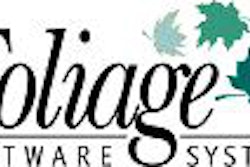This summer, PACS technology will begin rolling out at acute trusts in the United Kingdom as part of the nation's $10.6 billion National Programme for IT initiative. According to the plan, all 178 acute trusts will have PACS networks by the end of 2007.
PACS installations to date in the U.K. have mostly supported radiological services within large acute trusts or specialist diagnostic areas, but PACS under the National Programme for IT will have a much broader scope, operating as a community-wide image management system across multiple sites and multiple trusts, a spokesperson from the U.K. National Programme for IT told AuntMinnie.com.
"(The PACS networks) will allow consistent and seamless capture of, access to, and use of digital images by authorized healthcare professionals undertaking clinical work, research, or education," the spokesperson said.
The PACS technology will be rolled out through local service providers (LSPs) Fujitsu, British Telecommunications (BT), Accenture, and Computer Sciences Corporation (CSC) in five regions, called clusters: the Southern Cluster, the London Cluster, the East and East Midlands Cluster, the North East Cluster, and the North West and West Midlands Cluster.
In turn, Fujitsu will be partnering for PACS with GE Healthcare for the Southern Cluster. BT will be teaming up with Philips Medical Systems for the London Cluster; Accenture with GE for the East and East Midlands Cluster; Accenture with GE for the North East Cluster; and CSC with Eastman Kodak Health Imaging and ComMedica for the North West and West Midlands Cluster. All of these agreements are subject to contracts.
Currently, 25 acute trusts have PACS technology. With the new PACS program, rollout for the remaining locations is scheduled to commence this summer, with the National Health Service (NHS) aiming for 80% of sites to be online within two years. The remaining 20% are expected to have PACS by 2007.
Clusters are now working with the U.K.'s strategic health authorities (SHAs) and their constituent bodies to agree on the most effective installation timetable with their respective LSPs, the spokesperson said.
The Department of Health is making available £60 million ($109.1 million U.S.) to bridge any affordability gaps for the project, according to the spokesperson. This capital will be supplemented by capital and revenues (captured from cost savings due to PACS) from trusts.
"PACS systems help to reduce existing costs (e.g.) for film, chemicals, and, in due course, storage," the spokesperson said. "These savings will help to offset ongoing PACS operational costs."
An announcement on additional funding for subsequent years will be made later, the spokesperson said.
As with the National Programme for IT overall, the NHS has secured price reductions from vendors via economies of scale, supplier competition, and the program's commercial leverage, he said.
"The Department of Health, the NHS Modernization Agency, and professional healthcare bodies are all strongly supportive of PACS," he said.
The PACS program will bring a number of clinical and patient benefits, the spokesperson said. Patients will no longer have to wait while their x-rays are processed and delivered by hand from one hospital department to another.
In addition, the electronic storage of images will reduce staff time spent searching for films, filing, and retrieving x-rays. The risk of x-rays being lost or misplaced will also be reduced, as the digital image will follow the patient wherever they go, according to the spokesperson.
The project will also achieve improved staff and patient safety as a result of reductions in radiation dose and avoiding the use of hazardous chemicals, because the digital image will be transferred instantly to a PC. Clinicians will no longer have to hold x-rays up to lightboxes in accident and emergency (A&E) departments to make a diagnosis. Hospitals will also no longer have to pay for film.
Digital images can also be recalled whenever and wherever they are needed by a patient's healthcare professional, the spokesperson said. All systems will be fully compliant with the NHS Care Records Service, allowing for PACS network compatibility between all trusts.
"This means vital diagnostic information can be viewed from a variety of locations, both at the hospital and while the patient is undergoing treatment elsewhere," the spokesperson said. "Digital images will be stored and shared using DICOM standards. Images recorded through one PACS system will be able to be viewed in a different cluster if necessary to treat a patient."
By Erik L. RidleyAuntMinnie.com staff writer
June 25, 2004
Related Reading
UK health group to close 10 private hospitals, cut prices, June 11, 2004
UK hospitals urged to improve safety of infusion devices, May 25, 2004
Health staff out sick 5% of time in Britain, May 21, 2004
U.K. awards large multivendor PACS contracts, May 14, 2004
Copyright © 2004 AuntMinnie.com

















